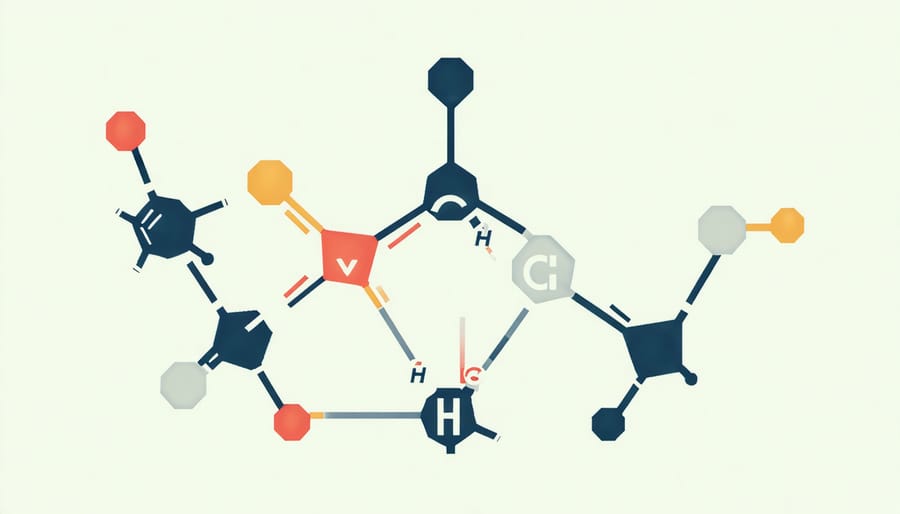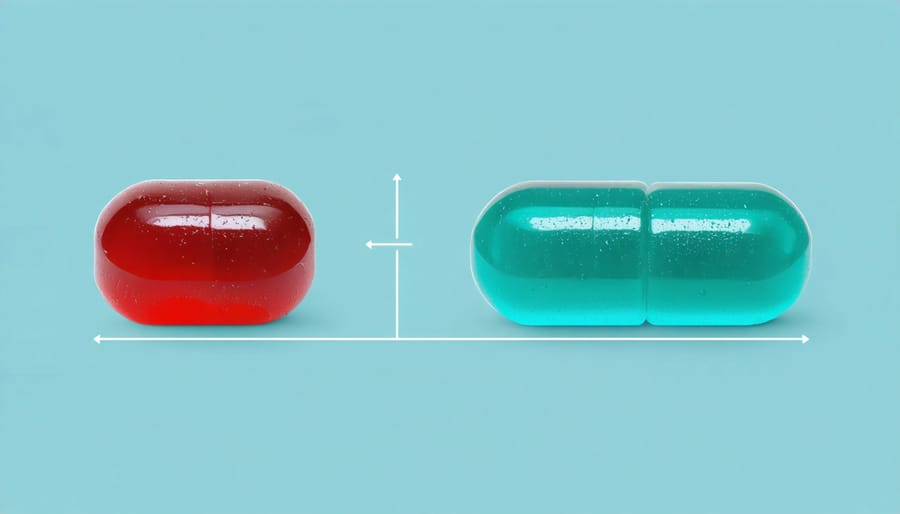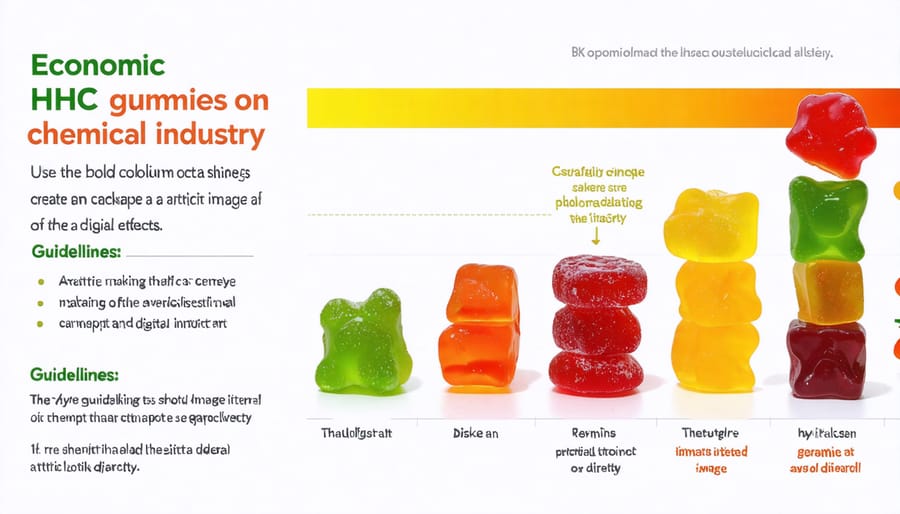
Unraveling the Chemistry Behind HHC Gummies: A Scientific Insight
Examine the synthesis process of HHC (hexahydrocannabinol) to understand its chemical structure and the interactions that differentiate it from other cannabinoids. Analyze the formulation of hhc gummies by reviewing the role of emulsifiers, sweeteners, and flavoring agents in enhancing bioavailability and consumer appeal. Investigate current Canadian regulations to ensure HHC products adhere to safety and legal standards, focusing on potential health implications and quality control measures. Prioritize sustainable chemistry practices by incorporating eco-friendly methods and materials in the production of HHC gummies to align with the increasing demand for environmentally conscious manufacturing within the Canadian chemical industry.
The Chemical Composition of HHC

Understanding HHC: A New Cannabinoid
Hexahydrocannabinol, or HHC, is an emerging compound in the cannabinoid industry, drawing keen interest for its unique properties and potential applications. Unlike the well-known tetrahydrocannabinol (THC), HHC is a hydrogenated derivative, meaning it includes additional hydrogen atoms. This structural distinction impacts its stability, providing potential advantages in formulation and preservation, particularly in products like gummies. The CBD molecular structure serves as a foundation in understanding related cannabinoids like HHC.
In Canada, where the legal landscape for cannabinoids is progressively evolving, HHC is a topic of scientific and industrial curiosity. Canadian researchers are exploring its potential benefits and applications, seeking to leverage a sustainable approach in its synthesis and use. HHC may offer alternative effects to THC, which could broaden its appeal to consumers and meet diverse therapeutic needs. Additionally, its potential for a milder psychoactive influence or varied therapeutic properties could widen its applicability within scientific research, leading to innovative uses and health solutions.
In conclusion, the growing interest in HHC is driven by its distinct chemical features and promising viability within the cannabinoid market, aligning with a focus on sustainable practices and regulatory compliance in Canada’s burgeoning chemical industry.
Synthetic Pathways and Production
Hydrogenated hexahydrocannabinol (HHC) is a hydrogenated derivative of tetrahydrocannabinol (THC), and its synthesis involves several key chemical reactions. The process typically begins with CBD, extracted from hemp, which is then subjected to hydrogenation. This reaction involves the use of a catalyst, often palladium or a similar transition metal, under high pressure and temperature conditions. The catalyst facilitates the addition of hydrogen atoms to the CBD structure, yielding HHC with a saturation of the molecule, differentiating it from its precursor THC.
The chemical transformation of CBD through this method is analogous to converting vegetable oil into margarine, showcasing the goal of achieving stability and altering pharmacokinetic properties. The specific details of the mechanism ensure the resultant HHC maintains the psychoactive properties essential for its role in HHC gummies while improving shelf-stability and reducing oxidative degradation.
Canada’s chemical industry is at the forefront of developing sustainable methods in synthetic chemistry, and the production of HHC is no exception. Efforts to utilize green chemistry principles seek to minimize environmental impact and enhance safety during synthesis by optimizing reaction conditions and selecting benign catalysts. Understanding these synthetic pathways is crucial for chemists involved in developing compliant and safe formulations of HHC gummies, ensuring adherence to Canadian regulations while advancing scientific and industrial objectives.

Incorporation of HHC into Gummies
Formulation Techniques
Formulating HHC gummies involves a meticulous blend of chemistry and food science to ensure their quality and consistency. The process begins with the precise synthesis of hexahydrocannabinol (HHC), an active cannabinoid, through hydrogenation of cannabis extracts. This chemical transformation requires controlled conditions to enhance the stability and purity of HHC. Once synthesized, HHC is carefully infused into the gummy matrix. This infusion technique requires in-depth understanding of solubility and emulsification processes to uniformly distribute the cannabinoid throughout the gummy, ensuring consistent potency. Canadian scientists have been at the forefront of developing sustainable practices in cannabinoid extraction and formulation, minimizing environmental impact. Quality control is paramount, involving rigorous analytical testing to confirm cannabinoid concentration and absence of contaminants, aligning with Canadian regulatory standards. Through advances in chemical engineering and sustainable practices, the formulation of HHC gummies exemplifies the integration of precise chemistry in producing safe and effective cannabis-derived products for adults.
Ensuring Stability and Quality
In the pursuit of ensuring the stability and quality of HHC gummies, the chemical industry employs several meticulous techniques that are crucial for maintaining the integrity of these products. One primary method involves rigorous analytical testing, such as chromatography, to verify the purity and concentration of hexahydrocannabinol (HHC). These tests are essential in confirming that the active ingredient is both stable and consistent across batches, a vital requirement for consumer safety and product efficacy. Additionally, the integration of standardized manufacturing protocols helps minimize any variation in gummy consistency and potency. Canadian researchers have been at the forefront of developing sustainable practices, emphasizing the use of eco-friendly solvents and recyclable materials in the production process. This not only enhances the environmental footprint of HHC gummies but also aligns with overarching national sustainability goals. By applying these advanced stabilization techniques, the chemical industry effectively upholds both the quality of the gummies and the trust of consumers, ensuring that each product meets stringent industry standards.
Safety and Regulatory Considerations
Safety Aspects of HHC Consumption
Hexahydrocannabinol (HHC) consumption, primarily through edible mediums such as gummies, has emerged as an intriguing subject for safety evaluation within the scientific community. While HHC is often compared to tetrahydrocannabinol (THC) due to its psychoactive properties, research on its safety profile is still evolving, emphasizing the need for rigorous scientific scrutiny. Canadian researchers are at the forefront of this exploration, working towards elucidating the molecular mechanisms and potential impacts on health systems.
One of the primary safety concerns associated with HHC consumption is its psychoactive effect, which may impair cognitive and motor functions, similar to but distinct from THC. This necessitates cautious use, especially for individuals in professions that demand high levels of precision and focus. Furthermore, as with any cannabinoid product, there is a potential for variability in individual response due to factors such as metabolic rate and previous exposure to cannabinoids.
Regulatory standards in Canada emphasize the importance of quality control and consistency in cannabinoid products. These regulations are designed to ensure that HHC gummies, like other consumables, meet strict safety and potency criteria. Ongoing research also investigates sustainable production methods to minimize environmental impact, reflecting a commitment to both consumer safety and environmental stewardship in the chemical industry.
Regulatory Standards in Canada
In Canada, the regulatory framework for HHC (Hexahydrocannabinol) gummies is shaped by the broader cannabis regulations and focuses on ensuring safety, quality, and sustainability. As with any product containing cannabis derivatives, HHC gummies must comply with the Cannabis Act, which governs production, distribution, and sale. This legislation mandates rigorous testing for contaminants and potency to protect consumer health and ensure accurate labeling. The influence of scientific advancements is evident, integrating innovative methods for testing and production that support both safety and environmental goals. Furthermore, the chemistry behind vaping and other cannabis-derived products has provided vital insights into the formulation of HHC gummies, emphasizing the importance of sustainable practices in the chemical industry. This includes using energy-efficient production methods and minimizing waste, aligning with Canadian commitments to sustainable development. By adhering to these standards, companies not only meet regulatory requirements but enhance consumer trust and contribute positively to the scientific community in Canada.
Impact of HHC Gummies on the Chemical Industry

Innovation and Research Contributions
The production of HHC gummies has initiated significant advancements in chemical research, particularly within the Canadian scientific community. As chemists explore the synthesis and formulation of hexahydrocannabinol (HHC), they contribute to a deeper understanding of cannabinoid chemistry, paving the way for novel applications and improved product formulations. This research is crucial in optimizing the safety profile, stability, and bioavailability of HHC gummies. Moreover, there is a strong emphasis on sustainable practices in the chemical industry, with Canadian researchers focusing on environmentally friendly extraction and synthesis methods. Such innovations not only align with national sustainability goals but also set new standards for responsible manufacturing in the global cannabinoid market. These efforts reflect a commitment to advancing scientific knowledge while addressing the growing demand for sustainable and efficacious products in the cannabinoid sector.
Economic and Market Implications
The emergence of HHC gummies marks a significant shift in the cannabinoid market, offering economic opportunities within the chemical sector. As the demand for novel cannabinoid products grows, so does the importance of understanding their chemical underpinnings. Canada, known for its leading-edge research in sustainable chemistry, is well-positioned to play a pivotal role in the safe and ethical production of HHC gummies. This aligns with global trends emphasizing environmentally conscious practices—a priority for Canadian scientists. The increasing interest in HHC gummies suggests a potential increase in research funding and resources directed toward optimizing their synthesis. By supporting innovation in this area, Canada’s chemical industry could enhance its economic landscape while adhering to rigorous scientific standards, ensuring safety and regulatory compliance. Expanding this market necessitates collaboration across scientific and industrial domains to fully grasp and leverage the economic implications of these products.
Conclusion
In conclusion, understanding the chemistry of HHC gummies is crucial for advancing both scientific knowledge and industrial applications. The unique chemical structure of hexahydrocannabinol (HHC) and its effects underscore the importance of meticulous formulation approaches, ensuring effectiveness and safety in consumer products. Through rigorous research, particularly within Canada’s robust scientific community, there is potential to enhance sustainability and innovation in the chemical industry, integrating novel cannabinoids into mainstream applications. This insight not only enriches our comprehension of cannabinoids but also paves the way for future advancements in cannabis-derived products, contributing to the broader future of chemistry. By maintaining strict adherence to scientific standards and regulatory frameworks, the chemistry of HHC gummies exemplifies how cutting-edge science can meet industry demands. Encouraging further exploration into this field will undoubtedly expand economic opportunity and scientific exploration, reinforcing Canada’s leadership in global cannabinoid research and its commitment to sustainable chemical processes.

